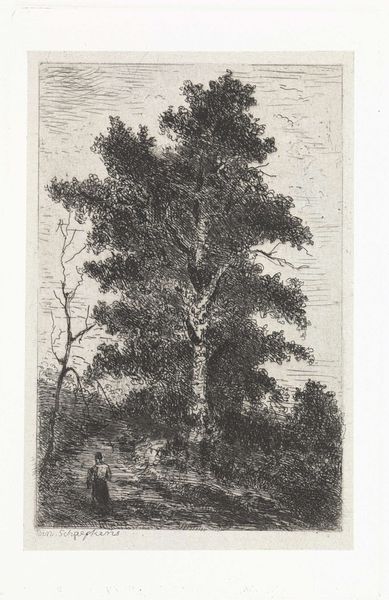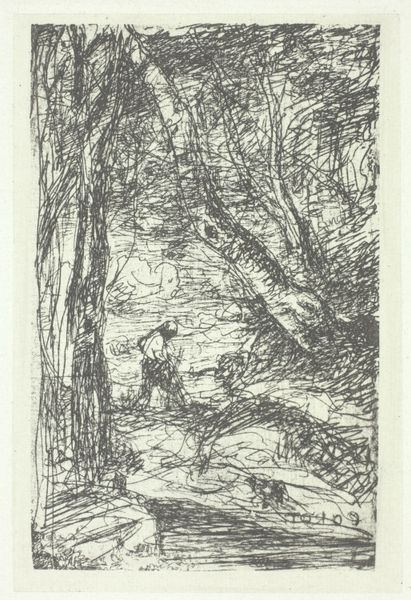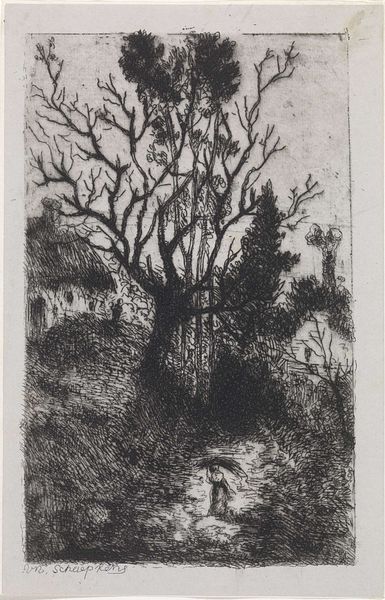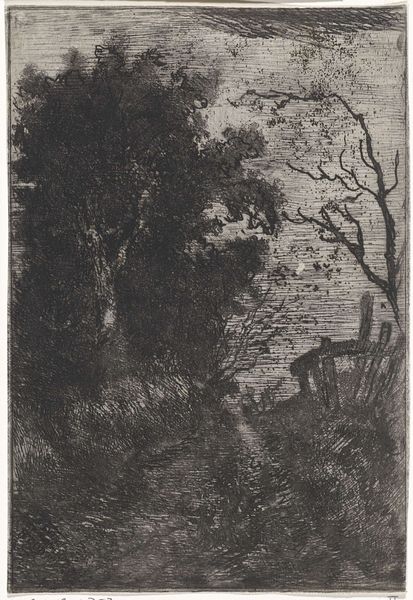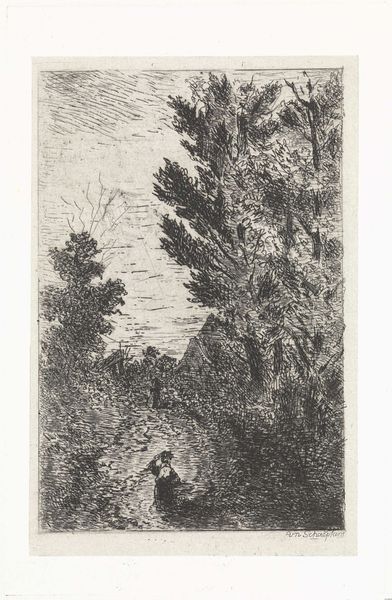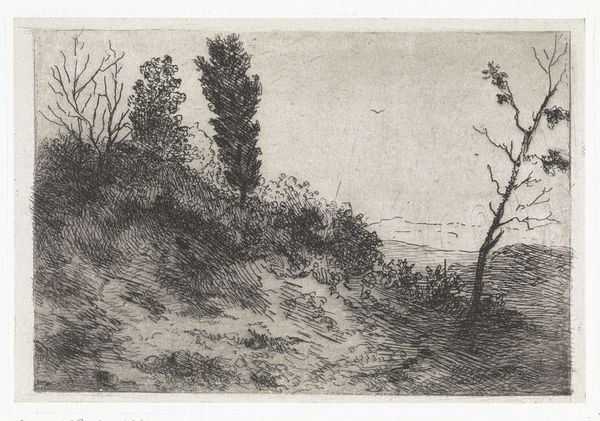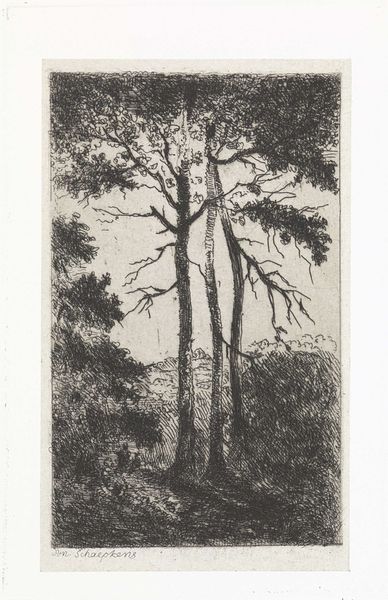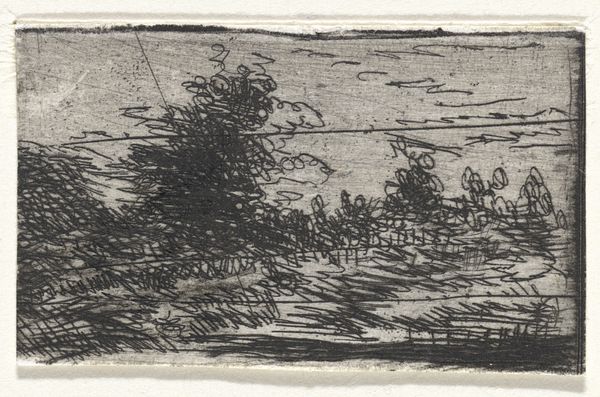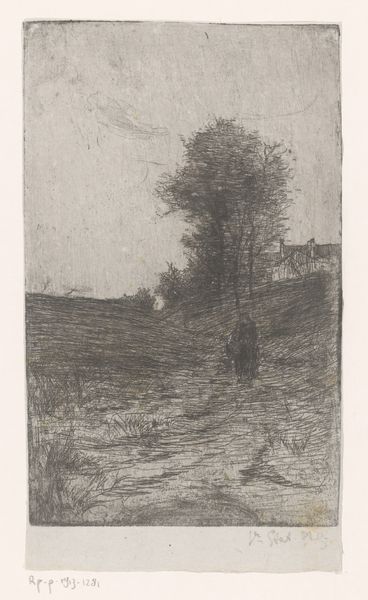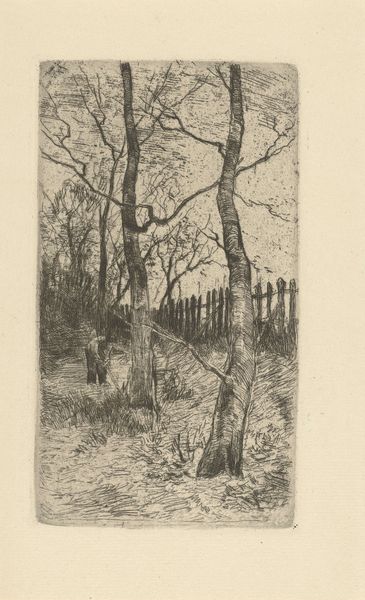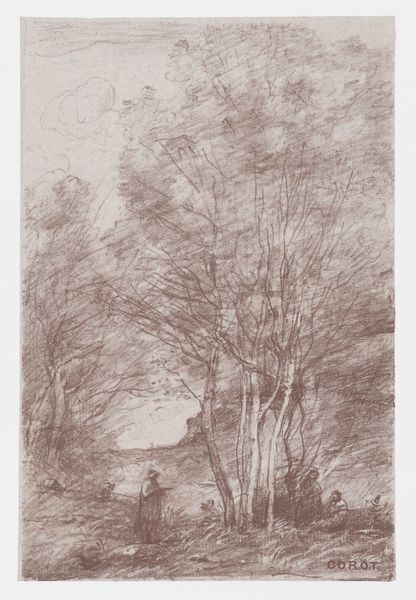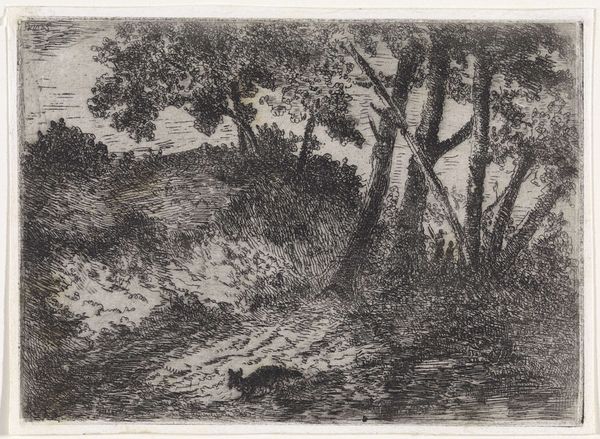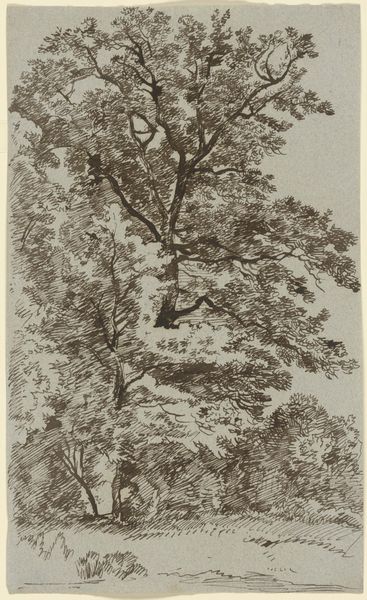
drawing, paper, pencil
#
drawing
#
organic
#
organic shape
#
pencil sketch
#
landscape
#
figuration
#
paper
#
pencil
#
natural texture
#
organic texture
#
natural form
#
realism
Dimensions: height 206 mm, width 130 mm
Copyright: Rijks Museum: Open Domain
Editor: This is "Vrouw in een duinlandschap," or "Woman in a Dune Landscape," by Arnoud Schaepkens, likely created sometime between 1831 and 1888. It's a pencil drawing on paper, and what strikes me immediately is the starkness, the contrast between the delicate figure and the wildness of the dunes. What do you see in this piece? Curator: Beyond the immediate landscape, I see a meditation on the position of women within the natural world and broader social structures of 19th-century Netherlands. Consider the historical context: burgeoning industrialization, shifts in gender roles, and the romantic idealization of nature. Where does this woman fit? Is she empowered by her connection to the land, or dwarfed by it? Editor: That's fascinating. I hadn’t considered the industrialization aspect. It makes the landscape feel almost like a refuge, but one she's still somewhat isolated within. Curator: Precisely. Look at the rendering of the figure. She is small, almost swallowed by the density of the landscape. Think about feminist theory and the concept of "otherness." Is she being presented as separate from, or perhaps dominated by, this natural world? Does this separation extend into societal power structures? How might her class or societal expectations play a role in her perceived isolation? Editor: So, it’s not just a pretty landscape; it's a commentary on a woman's place within society at the time. I suppose the roughness of the sketch even emphasizes the struggle for recognition. Curator: Absolutely. Schaepkens may be subtly questioning the romantic ideal by showing the stark realities faced by women. What did you make of the signature? Is the act of identifying as an artist in the context of limited cultural enfranchisement an act of defiance? Editor: Wow. I definitely have a richer appreciation for this drawing now, seeing how it invites questions about identity and historical context. Curator: Indeed, art can act as a profound catalyst for thinking critically about power, gender, and societal evolution.
Comments
No comments
Be the first to comment and join the conversation on the ultimate creative platform.
